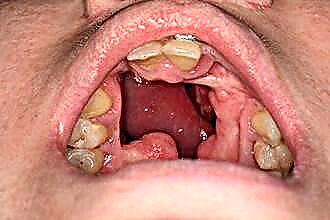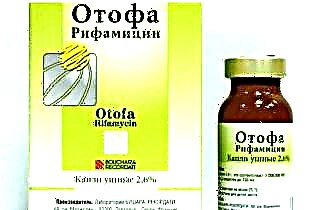Essential oils are concentrated hydrophobic (water-insoluble) liquids with a pungent odor. Due to their pronounced pharmacological and physiological properties, they are used in the framework of official and alternative medicine for the treatment of ENT diseases. Phytopreparations are obtained by steam distillation from plants with medicinal properties.
In herbal medicine, oily emulsions are used to sanitize the oropharynx, inhalation and oral administration. Unlike synthetic drugs, they rarely provoke adverse reactions. Lipophilic substances contain terpenoids, which provide them with high chemical activity. For this reason, oil-like fluids can be used to treat acute and chronic tonsillitis of any etiology.
Peculiarities
For therapeutic purposes, tea tree oil (melaleuca), as well as fir and sea buckthorn oils are most often used for the treatment of infectious pathologies. The popularity of phytopreparations is due to the following properties:
- disinfectants;
- pain relievers;
- wound healing;
- antiphlogistic.
Many of the therapeutic properties of lipophilic substances are due to the reactivity of terpenoids. They contribute to the acceleration of cellular metabolism, due to which the trophism of tissues and, accordingly, their reactivity is normalized. Essential oil liquids prevent the creation of optimal conditions for the development of microbial, fungal and viral pathogens.
In folk and official medicine, tea tree, fir and sea buckthorn oil is used as topical antiseptics. They help cleanse the mucous membrane of the oropharynx from the pathogenic flora, which accelerates the regression of inflammation. For this reason, it is advisable to use lipophilic substances for angina to relieve local manifestations of pathology.
Properties
What are the properties of essential oils? Hydrophobic liquids are used in the pharmaceutical industry for the production of many cold medicines. The widespread use of emulsions in herbal medicine is due to the following therapeutic properties:
- antimicrobial - inhibit the development of pathogenic bacteria, due to which they are used to treat purulent (lacunar, follicular) tonsillitis;
- antispasmodic - promote relaxation of the smooth muscles of the blood vessels, thereby improving blood microcirculation in the affected tissues;
- regenerating - accelerate cellular metabolism, thereby accelerating the process of tissue restoration of the lymphadenoid ring in the oropharynx;
- antiphlogistic - reduce the sensitivity of histamine receptors, as a result of which the regression of inflammation in the ciliated epithelium is accelerated;
- sedatives - they have a calming effect on the nervous system, which helps to restore the body's reserve forces.
Important! Essential fir and sea buckthorn oils cannot be used in their pure form due to their high chemical activity. An overdose of phytopreparations can cause irritation of the mucous membrane and the occurrence of burns.
Sea buckthorn oil
Sea buckthorn oil is a transparent emulsion with a reddish tint, which has pronounced immunostimulating and bactericidal properties. The essential oil liquid contains a large amount of carotenoids, tocopherol, vitamin K, glycerides of organic acids and macronutrients. The rich biochemical composition provided the phytopreparation with wide pharmacological properties, which include:
- analgesic;
- regenerating;
- antimicrobial;
- antiphlogistic;
- immunostimulating;
- decongestants.
Oily emulsion is used not only for angina, but also for other diseases of the oropharynx - laryngitis, rhinopharyngitis, tracheitis, influenza, SARS, etc. Locally, the phytopreparation is used in the form of inhalations, rinsing and treatment of the tonsils. The product is often introduced into the conservative treatment regimen for infectious pathologies as an effective symptomatic agent.
Sea buckthorn oil can be used to treat tonsillitis in the acute and sluggish phase of inflammation.
Recipes
An essential oil-bearing liquid extracted from sea buckthorn berries can be used for the treatment and prevention of tonsillitis. To accelerate the regression of pathological processes in the pharynx, several important features of the use of a lipophilic emulsion must be taken into account. To stop local manifestations of angina, the following recipes for the preparation of medicinal preparations are used:
- rinse solution: mix 2 tbsp. l. emulsion with 200 ml of boiled water; gargle with a heated preparation 4 times a day for 5-6 days;
- solution for inhalation: mix ½ liter of boiling water with 3 tbsp. essential oil substance; take inhalations for 10 minutes three times a day for a week;
- solution for oral administration: add 1 teaspoon of phytopreparation and 2 teaspoons of melted honey to 250 ml of warm mineral water; drink the drink at least 3 times a day.
As a phytopreparation, you can use only refined oil of the first extraction.
Fir oil
Fir oil is a colorless viscous liquid with a pronounced balsamic odor, which is extracted by steam distillation from balsamic, white and Siberian fir. Synthetic camphor is produced from it, which is used in pharmacotherapy for the treatment of infectious and inflammatory diseases. The herbal remedy contains ascorbic acid, retinol and carotenoids, which have a therapeutic effect.
Fir oil can be used in the treatment of sore throats due to the following properties:
- antiviral;
- pain relievers;
- tonic;
- bactericidal;
- fortifying;
- immunostimulating;
- regenerating.
Fir oil neutralizes the metabolites of pathogens, which helps to eliminate the general symptoms of intoxication. The components of the product are active against bacteria and viruses that provoke the development of tonsillitis, influenza, pharyngitis, SARS, etc.
Recipes
Fir oil has found application not only in therapy, but also in the prevention of infectious diseases. It practically does not cause allergic reactions, therefore it can be applied to the palatine tonsils and the mucous membrane of the throat. To eliminate inflammation, you need to treat the affected tissue with cotton swabs dipped in an emulsion.
How to use fir oil for inhalation and gargling?
- add 3 drops of herbal medicine to 1 liter of hot water; breathe over hot steam for 10-15 minutes 4 times a day;
- mix olive and fir oil in a ratio of 1: 10; use a warmed emulsion to compress the throat area 3 times a day;
- add 4 drops of phytopreparation to 250 ml of salted water; a solution is used to gargle the throat 4-5 times a day.
If sore throat is complicated by rhinitis, fir oil can be applied to the wings of the nose to facilitate nasal breathing.
Tea tree oil
The therapeutic use of tea tree oil can eliminate local manifestations of tonsillitis within 3-4 days. The essential oil liquid has antibacterial, anti-inflammatory and antiviral properties, therefore it can be used to treat catarrhal and purulent tonsillitis. The liquid extracted from the leaves of the tea tree contains at least 100 different terpenes that have medicinal properties.
Lipophilic terpinols, which are part of the phytopreparation, have a toxic effect on pathogenic microbes and viruses, which contributes to their destruction.Tea tree emulsion is active against yeast-like fungi, as well as some gram-positive and gram-negative microbes. For this reason, it is used not only for the treatment of pathologies, but also for oral hygiene.
Tea tree preparations have a beneficial effect on the microflora in the oral cavity, which prevents the re-development of pathogenic flora.
Essential concentrated solutions contribute to the elimination of toxins from tissues and blood, which contribute to the sensitization of the body. Cleansing the mucous membranes of the oropharynx with herbal remedies based on the tea tree help to eliminate purulent foci in lymphadenoid formations. Due to this, local immunity increases, as a result of which recovery occurs.
Recipes
Tea tree oil is an effective antiseptic that can be used topically to treat infectious diseases. It contains more than 450 active ingredients that help restore the functions of the ciliated epithelium. The herbal remedy not only eliminates pathological processes in the mucous membrane of the throat, but also helps to strengthen the gums.
A high-quality herbal preparation should contain at least 30% terpineol, which has a pronounced bactericidal effect.
How can tea tree oil be used medicinally?
- "Hot" inhalation: add 2-3 drops of herbal remedy in 1 liter of hot water; breathe in vapors of the solution for 5-7 minutes three times a day;
- "Cold" inhalation: apply no more than 6 drops of the emulsion on a clean handkerchief; inhale the vapors of the essential oil substance for 30-40 minutes three times a day;
- gargle: mix 1 glass of warm water with 5-6 drops of herbal remedy; gargle no more than 2-3 times a day.
Essential oil preparations are used as an adjunct to the main therapy for tonsillitis. It is undesirable to use solutions inside for gastritis and duodenal ulcer.



